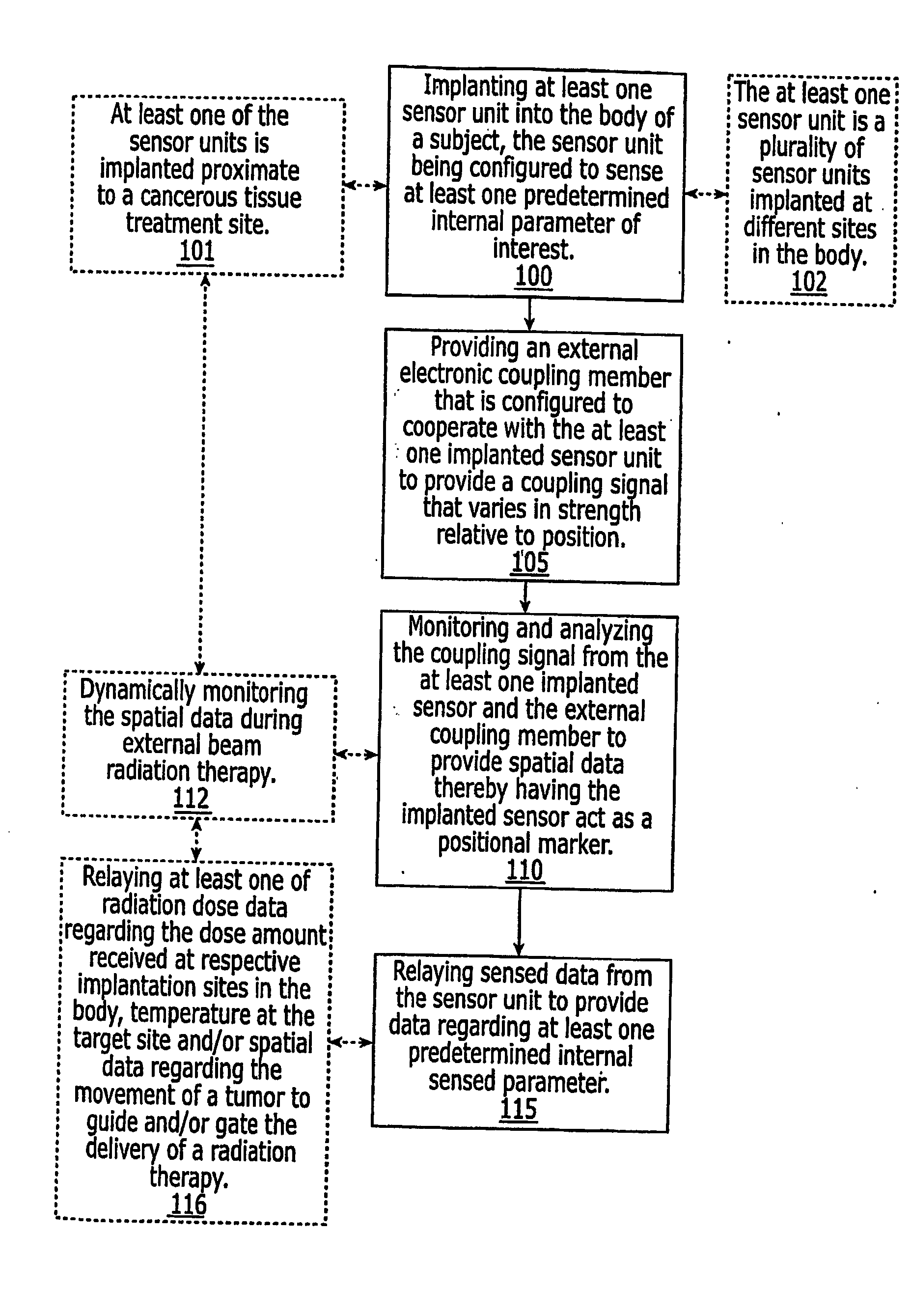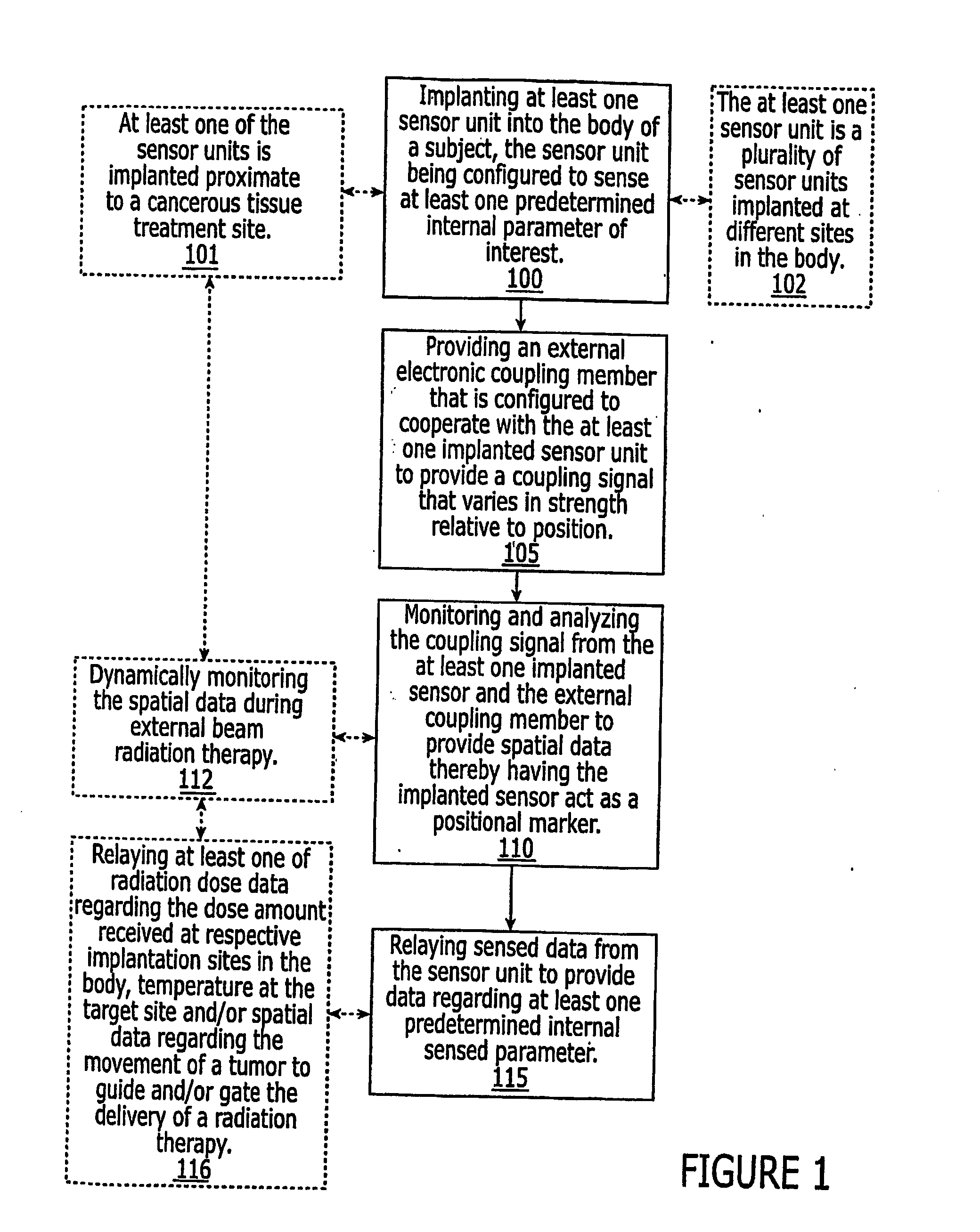Methods, systems, and computer program products for providing dynamic data of positional localization of target implants
a technology for implanted devices and positional localization, applied in diagnostic recording/measuring, applications, therapy, etc., can solve problems such as complex delivery of external beam radiation doses in the desired dose amount to the actual tumor site, and increase the potential for collateral damage to healthy or non-targeted tissu
- Summary
- Abstract
- Description
- Claims
- Application Information
AI Technical Summary
Benefits of technology
Problems solved by technology
Method used
Image
Examples
examples
[0083] Empirical measurements were taken with an implantable sensor unit having an 10 internal coil positioned at different orientations and coupling distances away from an external solenoid coil. The experimental set-up is shown in FIG. 8 and a typical probe-response set of waveforms (coupling signals) is shown in FIG. 9. As shown in FIG. 8, a ruler 76R was laid on a table-top surface 76T for positional reference. A first measurement was taken with the external and sensor coils parallel to each other with the sensor unit coil being positioned approximately centrally of the external larger coil. In this orientation, the coupling is maximal when the sensor coil is substantially centered in this manner. FIG. 10 illustrates the relationship between separation distance (cm) and induced voltage (mV). FIG. 9 illustrates an applied signal (from the external solenoid) and a response (coupling) signal. The applied voltage is the larger amplitude wave signal and the response or coupling signa...
PUM
 Login to View More
Login to View More Abstract
Description
Claims
Application Information
 Login to View More
Login to View More - R&D
- Intellectual Property
- Life Sciences
- Materials
- Tech Scout
- Unparalleled Data Quality
- Higher Quality Content
- 60% Fewer Hallucinations
Browse by: Latest US Patents, China's latest patents, Technical Efficacy Thesaurus, Application Domain, Technology Topic, Popular Technical Reports.
© 2025 PatSnap. All rights reserved.Legal|Privacy policy|Modern Slavery Act Transparency Statement|Sitemap|About US| Contact US: help@patsnap.com



